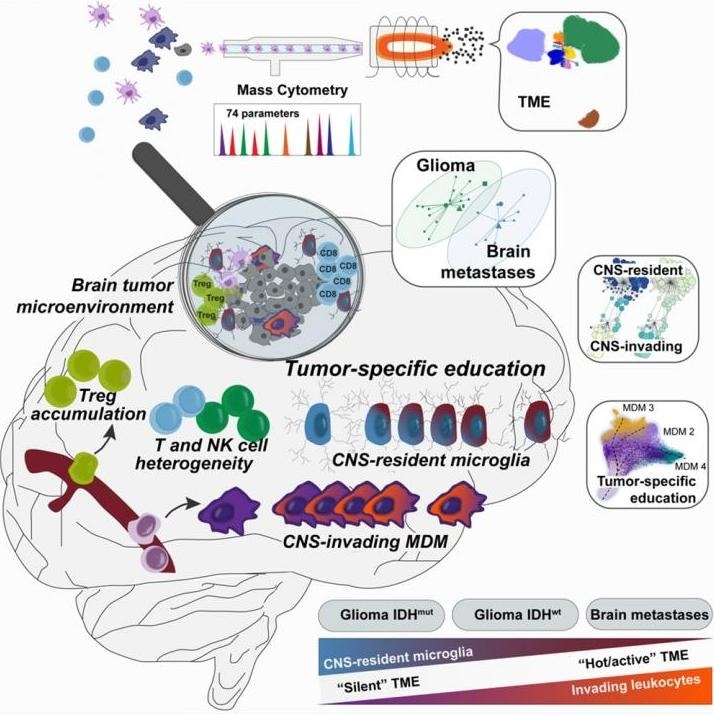Removing a malignant brain tumor is a kind of balancing act between protecting the healthy tissue and, at the same time, excising as much tumor tissue as possible.
Most often, brain tumors cannot be removed completely during surgery because cancer cells tend to infiltrate healthy brain tissue.

Previously, the composition of the tumor tissue in brain tumors, specifically regarding immune cells, was not explored with sufficient detail. Image Credit: University of Zurich.
Once the operation effectively removes as much of the tumor tissue as possible, the prognosis can be enhanced by subsequent chemotherapy and radiotherapy; however, a cure with standard treatments is hard to achieve.
Hope through immunotherapy
A research team from the University Hospital Zurich (USZ) and the University of Zurich (UZH) has recently identified the types and numbers of immune cells present in various types of brain tumors. Such highly accurate “tumor maps” are important to gain a better insight into the specific immune components in the tumor and to create targeted immunotherapies that trigger an immune defense reaction.
Our immune system is very precise and efficient. The immune defense can eliminate individual tumor cells, while protecting healthy cells.”
Burkhard Becher, Institute of Experimental Immunology, University of Zurich
While immunotherapy can have remarkable success in treating certain types of cancers, it has produced disappointing results in the case of malignant brain tumors. One reason for this is that the composition of the tumor tissue in brain tumors, especially with regard to the immune cells, was not studied before with adequate detail.
High-dimensional mass cytometry and complex computer algorithms
The scientists examined tissue from the neurosurgery operating theaters of USZ to define the immune cells in malignant brain tumors. They achieved this by using a technique established at UZH, known as high-dimensional mass cytometry.
With the help of this technology, millions of different types of cells can be analyzed simultaneously at the single-cell level.
The cells are defined using various proteins on their surface as well as in the cell interior, which differ based on the type of cell. Complex and self-learning computer algorithms are then used to process a large amount of data.
For every brain tumor, our technology gives an individual signature of the immune cells present. Similarities and differences between patients and tumor types can thus be compared.”
Burkhard Becher, Institute of Experimental Immunology, University of Zurich
Immune cell composition depends on the type of tumor
The study revealed that it is mainly the type of tumor that establishes the distribution, kind, and frequency of immune cells found in individual brain tumors.
Gliomas, which develop directly in the brain, look different from metastases of other tumors in the body which have spread into the brain. In gliomas too we can clearly differentiate between various sub-groups through the specific composition of the immune cells.”
Ekaterina Friebel and Konstantina Kapolou, PhD Candidates, University of Zurich
Friebel and Kapolou are part of the collaborating research teams.
Marian Christoph Neidert, Neurosurgeon at USZ, stated that the outcomes not only help to gain a better understanding of the immunological mechanisms in brain tumors: “They also offer a basis for the development of immunotherapies that are tailored to the various types of brain tumors.”
The tumor tissue examined in this study was extracted from patients treated at the USZ Brain Tumor Center. But more studies have to be performed before the immunological results can benefit brain tumor patients.
Source:
Journal reference:
Friebel, E., et al. (2020) Single-Cell Mapping of Human Brain Cancer Reveals Tumor-Specific Instruction of Tissue-Invading Leukocytes. Cell. doi.org/10.1016/j.cell.2020.04.055.